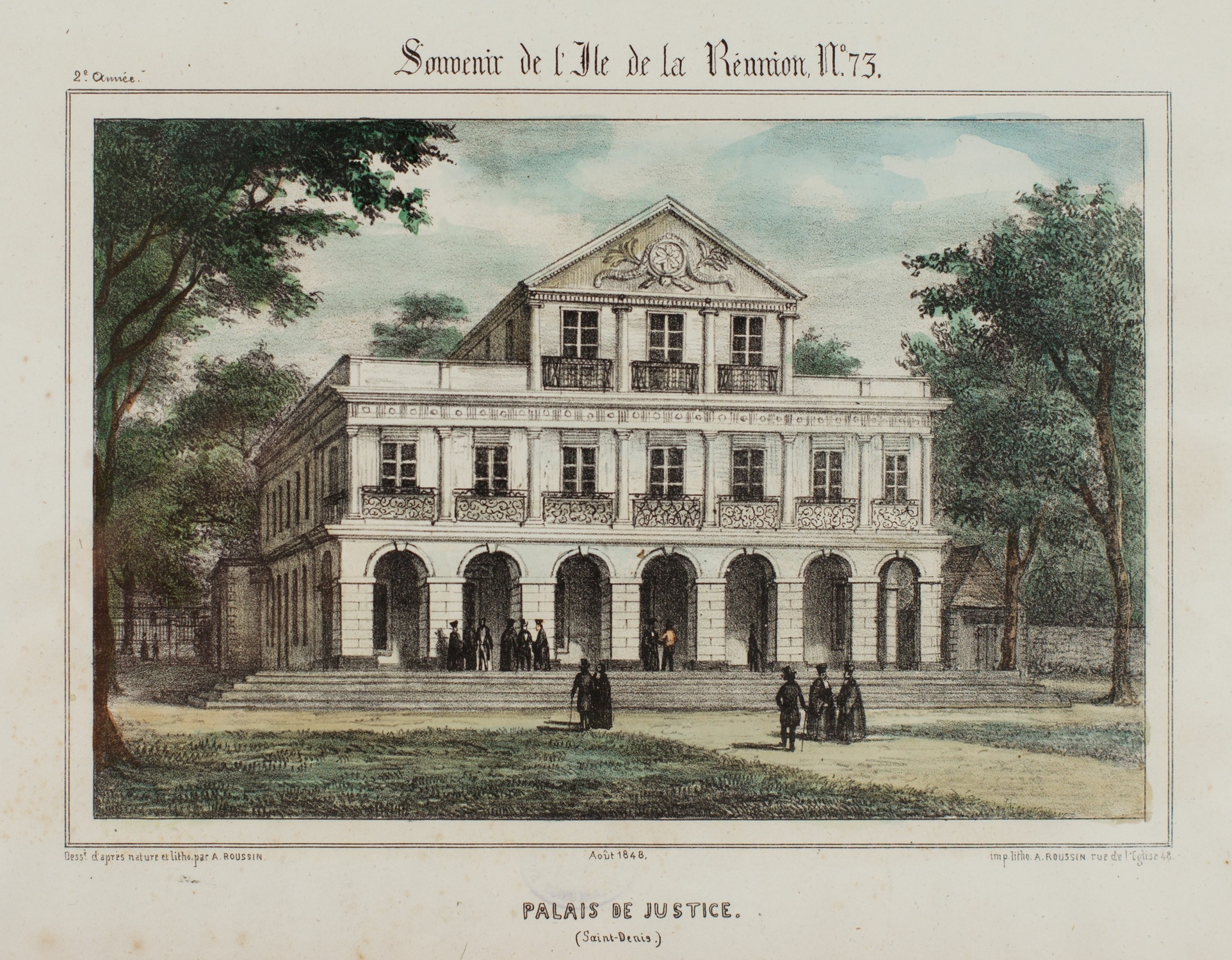
- Home
- Archaeology on Reunion Island
- Colonial organization
- Colony before and after slavery
A slave colony until 1848, Réunion then became a slave-free colony and was transformed into a French département in 1946. Its spatial organisation reflects its tropical island geography and its colonial history and sociology.
Development, construction and equipment: contexts and dynamics
Military, sanitary and road infrastructure works, buildings and constructions, and communication developed over time and in relation to their economic, social and political context, and include public buildings, religious edifices, educational facilities, and major communication works. Institutions were also established and developed in relation to the events under study but also the dynamics that organised and structured them.
Socialise, educate, teach
Schools shed an interesting light on these movements. When the island was first colonised, there was no need for schools on Bourbon, a farming colony dependent on the Île de France, its regional metropolis. After the signing of the Treaty of Paris in 1815, schooling became a pressing issue as a new political order emerged on Bourbon and the island became the only French colony in the Indian Ocean. It also underwent a period of radical economic change with the planting of the first sugar cane crops and growing demand for trained labour. Lastly, the need to integrate an increasing number of Libres de couleur - free people of colour - had a big impact on Réunion society.
This was the driving force behind the development and implementation of the colonial school system, with two separate systems for students from different social backgrounds. The Collège Royal de Bourbon was established in Saint-Denis on 24 December 1818. From 1815 to 1848, the “Collège Royal" was the name of the lycée, an institution created by the First Consul in 1802. The Collège Royal and then the lycée provided a high standard of education for fee-paying middle-class children, who for many years were exclusively white and were taught by teachers recruited from the most prestigious establishments in Paris. In 1817, a few months before the founding of the Collège Royal, primary schools were opened for local children regardless of their colour. These schools provided free education of a limited nature, with an emphasis on practical activities and moral instruction. The children of slaves were excluded from these schools until 1846.
There were two teaching congregations, both Christian: the Frères des Écoles chrétiennes for teaching boys and the Sœurs de Saint-Joseph de Cluny for girls. The establishment, organisation and development of schools in a slave colony and then in a post-slavery society caused contradictions, tensions, problems and crises, with the control of the institution and its actors as the major issue at stake.
Réunion in figures
In the early 19th century, up to 70% of the population were slaves and 62,000 slaves were freed on 20 December 1848. The population changed with the arrival of indentured labour, and in 1881, out of a total population of 169,493, 62,955 were indentured labourers, mostly Indians.




